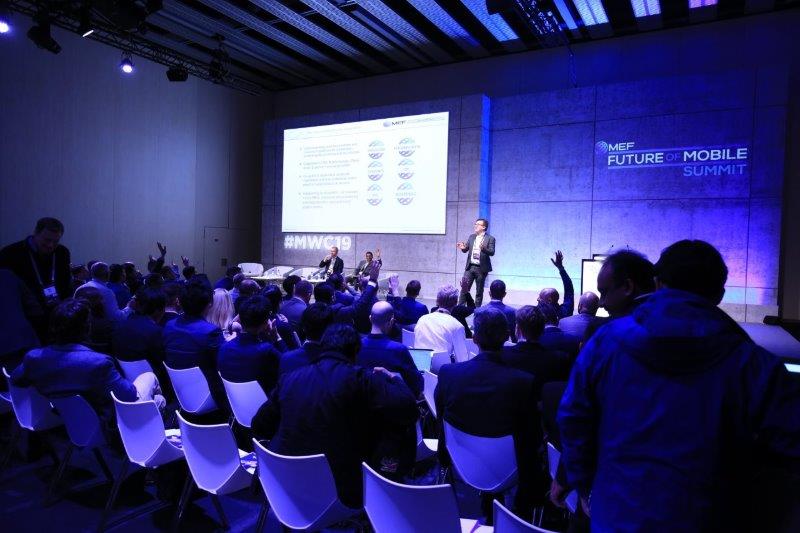“Don’t hesitate — get started.” That’s the message from Sinch to business leaders still weighing the move to Rich Communication Services (RCS) and artificial intelligence (AI). Backed by its recent research showing RCS drives 2–7x higher click-through rates and up to 42% engagement, Sinch warns that brands waiting for full adoption risk missing out on today’s competitive advantages. Meanwhile, 97% of businesses plan to integrate AI into customer communication by 2025.
“It’s not hard to get started,” said Miriam Liszewski, Commercial Product Manager for RCS at Sinch, on the MEF podcast Perspectives. “Whether you’re working with Sinch or just exploring, you can begin in a simple way and immediately improve your customer experience.”
RCS — the next evolution of SMS — enables branded, interactive, and secure messaging directly in the native messaging app. Verified sender identities, richer formats, and better analytics make it a logical next step. Sinch, which powers over 150 billion customer interactions annually, believes businesses should begin adopting RCS now, even as coverage expands.
According to Liszewski, 59% of industry leaders surveyed by Sinch see RCS as “game-changing.” “Even with limited user availability,” she said, “you’ll see growth, increased clicks, and better customer interaction — people like it.”
Sinch also stresses the synergy between RCS and AI. Used together, they can create powerful, personalized conversations that go far beyond simple notifications. “It’s not just SMS anymore,” said Isabella Rahm, Product Marketing Manager at Sinch. “You have WhatsApp and other channels too — the key is reaching the right user on the right platform.”
Rahm urged companies to adopt a multichannel strategy, using AI to optimize where and how messages are delivered. This approach supports not only reach and engagement, but also trust and transparency — values that earned Sinch a MEFFYS ESG Award for its environmental and ethical commitments.
In the interview with MEF, Miriam Liszewski and Isabella Rahm explored how AI is reshaping customer engagement—moving beyond automation to enable real-time personalization, smarter interactions, and seamless omnichannel experiences. They emphasized the importance of transparency, building trust through human fallback options, and starting now with scalable solutions like RCS to meet customers where they are.
You can listen to the full podcast by clicking below. What follows is a condensed version of the Perspectives conversation with the two Sinch executives.
MEF:
Research shows 97% of businesses plan to use AI in customer interaction by 2025. Beyond automation, what real value does AI bring?Miriam Liszewski (Sinch):
AI brings value far beyond automation. It enables real-time personalization, accurate information delivery, and helps businesses anticipate customer needs. AI-powered bots can answer simple queries like “Where’s my order?” but also go further—offering tailored responses based on customer data, previous behavior, and preferences. It improves efficiency and accuracy while delivering seamless, intelligent experiences across channels. It’s not just visible chatbots—it also works behind the scenes, optimizing how and when we reach customers.MEF:
Still, automation can feel cold. There’s talk of “AI fatigue.” How do you create trust in AI-driven customer experiences?Miriam Liszewski:
Trust comes from honesty and transparency. Customers should know when they’re talking to AI and be given the option to speak to a human if they prefer. Businesses must also audit and monitor their AI systems to ensure they’re aligned with brand values and customer expectations. It’s about using AI to support—not replace—the human touch.Isabella Rahm (Sinch):
Exactly. We also use sentiment detection. If someone becomes frustrated, the system flags it and escalates to a human. No one wants to argue with a bot. AI should make things easier—not more annoying.MEF:
How does Sinch bring messaging, voice, verification, and AI together into one seamless experience?Miriam Liszewski:
Our platform was built for this. With Sinch’s Conversation API, businesses can use a single integration to connect across all channels—WhatsApp, SMS, RCS, email, voice, and more—while keeping a unified customer profile. If a message doesn’t get through on one channel, we can automatically switch to another. Our verification tools also adapt—sending codes via the most efficient method. And we tie everything together with AI and live agent tools. It’s a full-stack solution built to make omnichannel engagement easy and consistent.MEF:
You work with both telcos and enterprises. How do you balance those two worlds?Miriam Liszewski:
It gives us a 360-degree view. With mobile operators, we optimize networks and infrastructure. With enterprises, we help deliver smarter customer experiences. That means we understand how to build at scale, securely, and with performance in mind—while also focusing on customer-centric design. It’s a powerful combination.MEF:
Sinch recently won the MEFFYS ESG award. What’s your approach to making ESG more than just a buzzword?Isabella Rahm:
It’s core to how we operate. We’ve committed to net-zero emissions by 2050 and are already taking steps—integrating ESG into governance, product design, and supply chains. For example, we conduct lifecycle assessments on our products to understand their environmental impact. We’ve also strengthened our procurement policies and embedded a Code of Business Ethics across our teams. ESG isn’t just about compliance—it’s about long-term resilience and accountability.MEF:
Can ESG align with the shift toward open telecom ecosystems and APIs?Miriam Liszewski:
Absolutely. Open ecosystems encourage collaboration and efficiency. That means fewer silos, better performance, and less waste—whether that’s energy, time, or resources. AI helps, too—though it uses power, it also helps optimize operations, reduce emissions, and improve targeting. ESG and innovation aren’t in conflict—they enhance each other when done well.
MEF:
Finally, for businesses still unsure about adopting RCS or AI—what’s your message?Miriam Liszewski:
Start now. RCS is a natural upgrade from SMS—no big tech change, just better capabilities like branded senders, read receipts, images, and calls-to-action. And the results speak for themselves: better engagement, higher conversion. You don’t have to overhaul everything overnight. Start small, measure, and grow.Isabella Rahm:
Also, think about the customer. They’re on different channels at different times—RCS, WhatsApp, SMS, email. You need to be there, too. It’s not just about the tech—it’s about building consistent, respectful, and responsive communication wherever your customer is. That’s what great digital experience looks like today.






